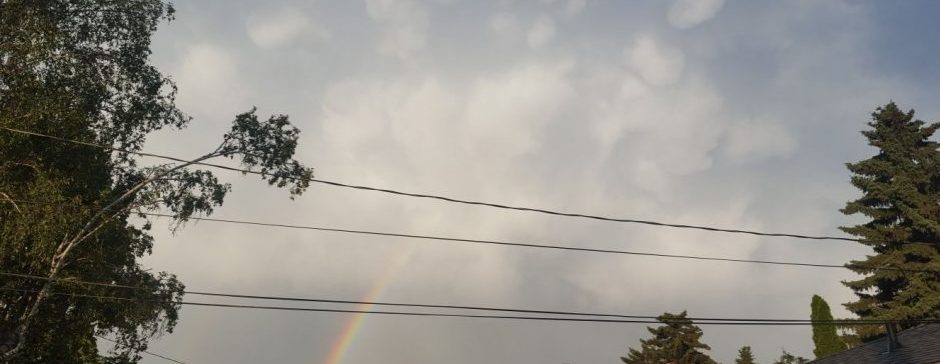You might have seen on the forecast that today and tomorrow will be quite chilly and rainy, but that may change for the rest of the week.
Today we got a pretty easy-to-understand upper atmosphere layout. All you really need to know is that currently there is a low off the west coast, far enough south that I wouldn’t consider it in the Gulf of Alaska; and a high over the tip of Québec. For this, we’ll say that the low is stationary, even though it isn’t. Because that will make this simpler. So, for this pattern, a really crazy rare thing is happening to the high: It is moving west! Isn’t that crazy? Right? Right?
At this point some of you may already be confused. But don’t worry. I’ll explain. Basically, all systems on Earth like to move east. They like doing it more than anything else. So, they will almost never go west unless if the right pressure systems manage to push it that way. For a more correct explanation, head down to the bottom of the page.
Moving west, eh? Lets see what’s west of Québec. Since upper-level ridges usually come up west of highs, lets go 2500 km. Wait a minute…
Wait a minute indeed. As well, remember that low? Well, what if I told you that at the same time as that high will move west, another low will appear in the central to western US and then we suddenly see an upper level alternation: Low-high-low. You know what that means? It’s omega block time!!!1!11!
If you don’t know what an omega block is, then…sorry. I don’t have enough time to explain that all. I already made a huge hunk of a paragraph at the end of this post. Maybe just use google for this one.
Okay Ben, just tell me the forecast already! All this buildup wasn’t in the job description!
Did you read the fine print? You’re going to have to wait until the forecast this evening, unless if you’re one of my amazing Elementeers©, then you’ll get earlier and more detailed “content”. HahahahaGOGETELEMENTNOW
Okay, here’s actually why systems move east: Despite what flat earthers tell you, the Earth IS a sphere. In addition, it is spinning. This spinning interacts with the upper troposphere (It does affect more, but that doesn’t really matter for weather) and creates streams of very fast-moving air. These are the jet streams. The jet stream interacts pressure systems, witch in turn interact with others, and eventually almost all the systems move west. Of course, in the southern hemisphere it is flipped, and as well some systems can actually move the “wrong way” on their own when they’re near the equator. This usually happens with tropical cyclones, which is why some Maritimers may keep an eye out when the Caribbean is warm and a cyclone develops off the west coast of Africa.

